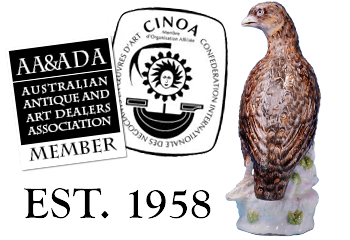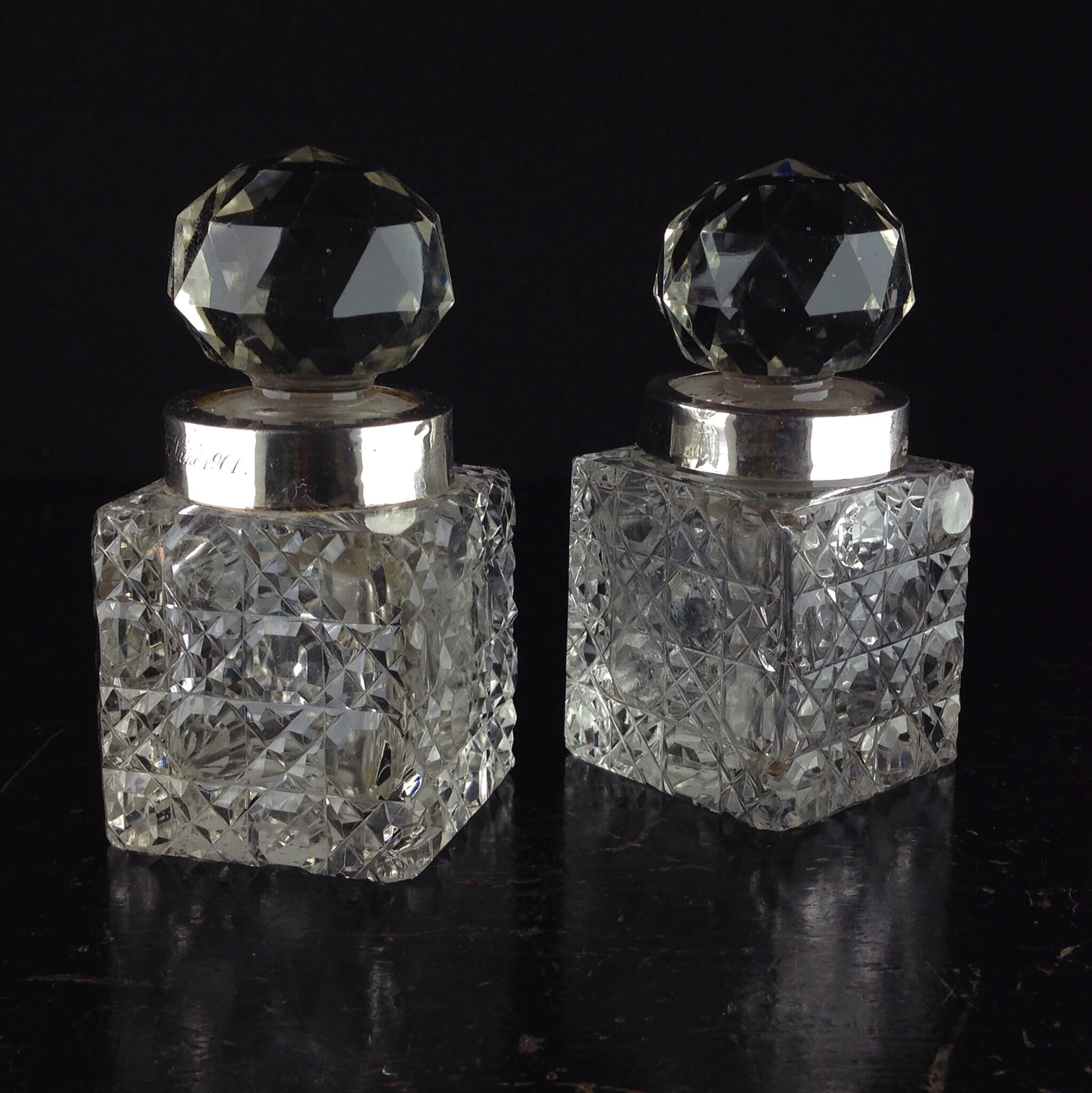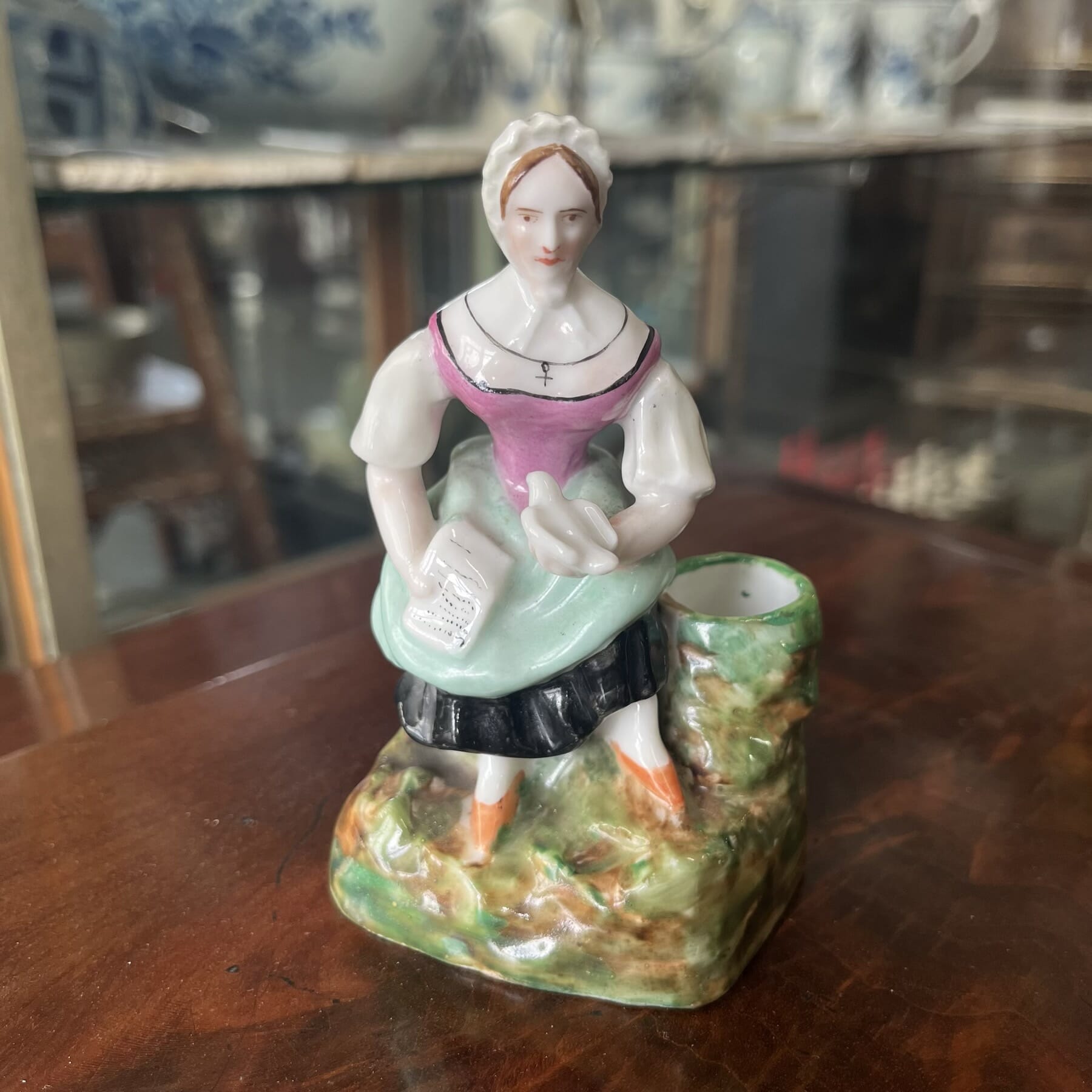Meissen trompe l’œil dish featuring realistic flowers and fruit heaped on a pierced-rim dish, by J.J. Kaendler, 1740-45
$5,500.00 AUD
A very rare Meissen trompe l’œil dish featuring realistic flowers and fruit heaped on a pierced-rim dish, a pale blue ribbon painted in as part of the rim design, with rich gilt edge, the whole picked out in naturalistic colours.
Crossed swords mark in underglaze blue to base, also 2x impressed numbers, possibly the same one done twice: either ‘9’ or ‘6’.
Attributed to J.J. Kaendler, circa 1740-45.
Condition: restored, with losses: there are 3 areas of breaks to the pierced rim, with only one small area missing and not visible; no damages extend into the body. The flowers have suffered lost petals, stamens etc. , and have some wear and overpainting. Overall in a pleasing condition for display, very natural with the damages looking like a hungry caterpillar has passed through….
This Meissen trompe l’œil dish from the 1740s demonstrates the artistry of Johann Joachim Kändler (1706–1775), Meissen’s master modeler during that era. Kändler played a pivotal role in developing naturalistic porcelain designs, including lifelike floral arrangements and intricate botanical compositions. His work was instrumental in establishing Meissen’s reputation for excellence in porcelain craftsmanship, and it is clear why this became the basis for the multitude of copies across Europe in the following centuries.
The 18th-century Meissen trompe l’œil pieces, under Kändler’s influence, emphasized naturalistic representations of flora, with a focus on botanical accuracy and subtle coloration. In contrast, 19th-century Meissen and English porcelain works often showcased more exuberant and densely packed floral decorations, reflecting the period’s taste for opulence and intricate detailing.
While both eras celebrated floral motifs, the earlier Meissen pieces prioritized lifelike accuracy, whereas the later works leaned towards decorative richness and complexity.
Comparable 18th century examples are rare, and often in poor condition: survival of such delicate work is a challenge. The restoration on this piece is an acceptable ‘Museum’ restoration, meaning the piece displays in a pleasing way, and the repairs are only visible on closer examination. A complete restoration would include overpainting and replacement of missing blooms, etc. , but as a beautiful piece with a remarkable history, it is not necessary.
| Condition | |
|---|---|
| Size | |
| References |
In stock










